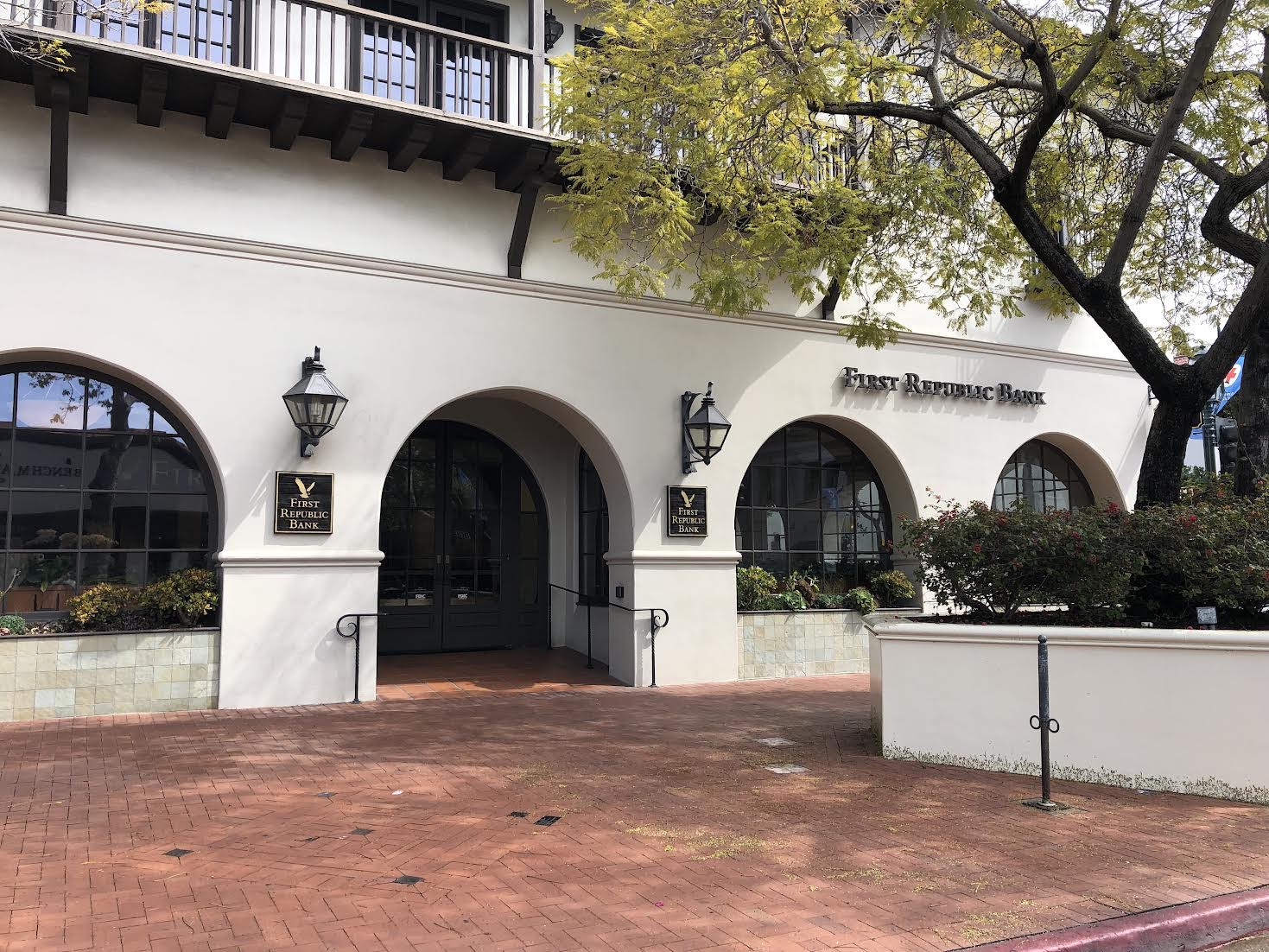First Republic Bank: ‘Nothing Changed but the Name over the Door’
JPMorgan Chase Acquires First Republic Bank Overnight

The doors were open on Monday at First Republic Bank’s branch in downtown Santa Barbara, despite becoming the third U.S. bank to be seized by federal regulators in just more than seven weeks. The friendly bankers inside the deserted bank at State and Anapamu referred a reporter to corporate media relations, which handed over a statement saying the bank had been acquired by JPMorgan Chase overnight.
“Nothing has changed except the name over the door,” a spokesperson for the Federal Deposit Insurance Company (FDIC) said, though for now the name “over the door” at the State and Anapamu branch remains First Republic.
The FDIC is acting as receiver for San Francisco–based First Republic Bank, and JPMorgan Chase is assuming its deposits and purchasing nearly all its assets. A company statement assured customers their money was “backed by the fortress balance sheet of JPMorgan Chase.”
First Republic customers have become instant clients of Chase Bank, the consumer and commercial arm of the financial titan with $3 trillion in assets. As the Great Recession of 2008 unfolded, JPMorgan acquired the failing Bear Stearns and Washington Mutual. First Republic is the second-largest bank failure in U.S. history after Washington Mutual.
Troubles at First Republic were widely reported when Silicon Valley Bank, Signature Bank, and Silvergate Bank failed in March, in part because of mad fluctuations in the crypto market and in part because of weakened values in the overabundant low-interest bonds they held.
It remains unclear exactly what went wrong at First Republic, but as at Silicon Valley Bank, its depositors tended to have very large deposits, that exceeded the FDIC’s insurance limit of $250,000. Most of those depositors fled at the first sign of trouble. First Republic’s stock tanked by 50 percent the day after its first-quarter report showed that $100 billion in deposits — more than half its holdings — were withdrawn by customers after the failures of the other banks.
In the runup to May 1, First Republic received about $100 billion in deposits, credit, and loans from the major banks and the Federal Reserve in attempts to shore up both the bank and public confidence. After the stock sell-off last week, however, the feds began looking for a buyer, with several banks asked to submit bids — JPMorgan Chase, PNC Financial Services, and Bank of America among them.
Both the FDIC and JPMorgan Chase are sharing in the losses and potential recoveries from disemboweling First Republic — the bank held $229.1 billion in assets, and $103.98 billion in total deposits, as of April 13. The FDIC estimates its receivership will cost about $13 billion — the difference between First Republic’s assets and the bank’s liabilities. These costs will not be covered with taxpayers’ money, but by a fund contributed to by banks..
Media reports indicate that First Republic’s shareholders and debt holders are expected to be wiped out by the events of today, but little is known of what will become of the bank’s 84 branches in eight states. In downtown Santa Barbara, Chase Bank is just one block up the street from First Republic.



